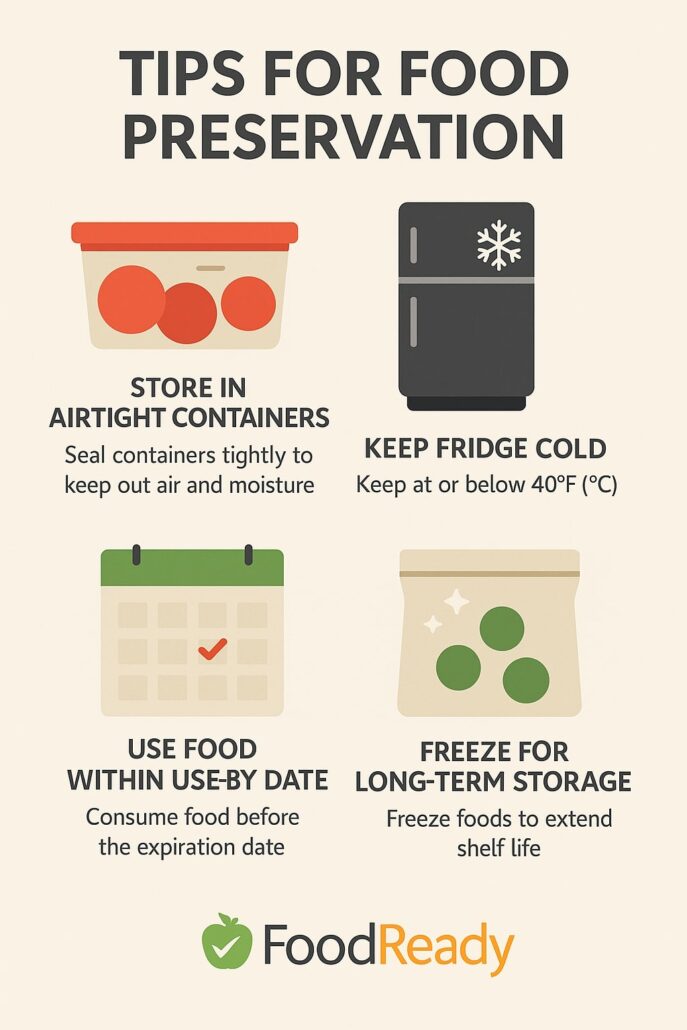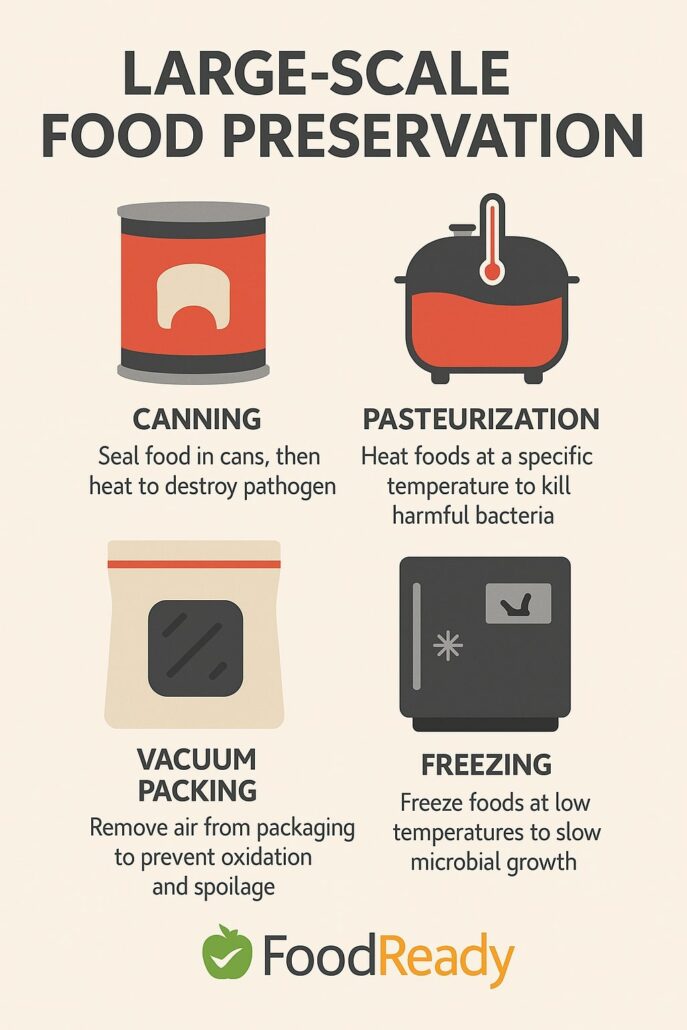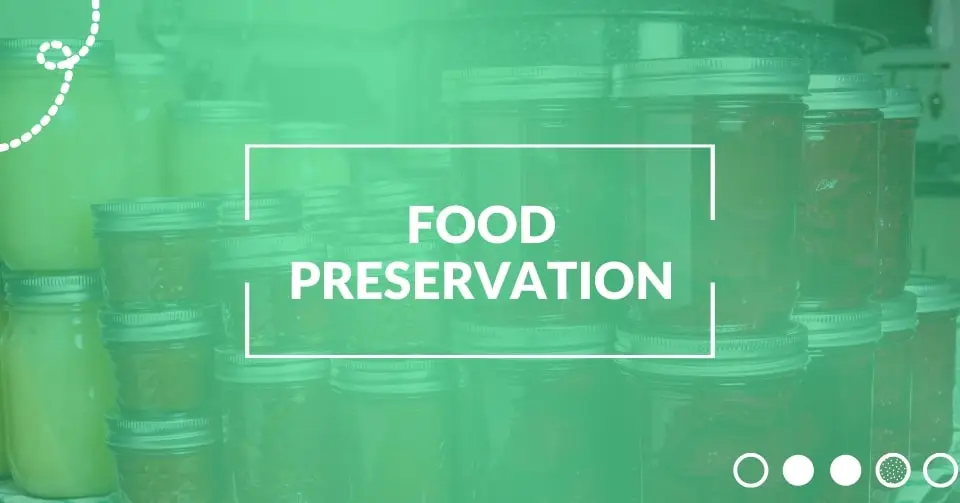Food preservation has proven to become critical to global food security, public health, and sustainable agriculture over time. About 1.3 billion tonnes of food are wasted annually, according to the Food and Agriculture Organization of the United Nations (FAO), whilst the global economic cost of food waste is estimated at around a whopping $940 billion per year. Figures like these should make food businesses sit up and take stock of the situation to realize that effective food preservation techniques are now more essential than ever! Not only does food spoilage result in massive financial loss, but it also largely contributes to serious environmental issues and gives rise to problems like greenhouse gas emissions as well as inefficient land and water use.
The United States, being a leading player in food production, has seen rapid evolution in food preservation technologies—from traditional canning and freezing to more advanced systems such as high pressure processing (HPP) and modified atmosphere packaging (MAP). Meanwhile, software and technology companies like FoodReady are playing an increasingly vital role in helping food producers, processors, and suppliers ensure product safety and longevity.
This article explores key food preservation methods, presents real-world case studies from the U.S., and outlines how FoodReady’s technology empowers food businesses to optimize their preservation practices.
What is the Role of Food Preservation?
Food preservation refers to a set of techniques in food processing aimed at preventing food spoilage, ensuring consumer health, and extending shelf life. Spoilage of food is most likely to occur due to microbial activity, enzymatic action, oxidation, or physical degradation.
Without proper food preservation, even the most nutritious foods can become dangerous to consume.
The key objectives of food preservation are as follows:
| Objective | Description |
| Food Safety | Preventing foodborne illnesses. |
| Shelf Life Extension | Making products viable for longer storage and transport. |
| Nutritional Retention | Preserving the original nutritional profile. |
| Cost Reduction | Lowering waste-related losses. |
| Sustainability | Reducing environmental impact of food waste. |

Traditional vs. Modern Food Preservation Methods
1. Traditional Techniques
| Technique | Description |
| Canning | Sterilizing and sealing food in airtight containers. |
| Freezing | Slowing down microbial and enzymatic activities. |
| Drying | Removing moisture to inhibit microbial growth. |
| Pickling and Fermentation | Using acids or microbes to preserve and sometimes enhance food. |
2. Modern Techniques
| Technique | Description |
| High-Pressure Processing (HPP) | Using high pressure instead of heat to kill pathogens. |
| Modified Atmosphere Packaging (MAP) | Altering gas composition within packaging to slow spoilage. |
| Irradiation | Exposing food to ionizing radiation to eliminate pathogens. |
| Cold Plasma Technology | Utilizing reactive gases at room temperature to disinfect food surfaces. |
| Smart Packaging | Integrating sensors that detect spoilage indicators. |
Case Studies in Food Preservation (USA)
Case Study 1: HPP in Ready-to-Eat Meals – Good Foods Group, Wisconsin
Challenge: Ready-to-eat (RTE) products like guacamole and salads are particularly susceptible to microbial contamination, making shelf life a significant issue.
Solution: Good Foods Group implemented High Pressure Processing (HPP) across its production lines. This technology applies pressure uniformly, effectively killing bacteria such as Listeria and Salmonella without affecting the food’s texture or nutritional value or any other form of deterioration.
Outcome:
- Shelf life was extended by up to 10x.
- Reduced reliance on chemical preservatives.
- Boosted consumer trust with clean-label products.
Case Study 2: Smart Packaging in Dairy – Cornell University and Dairy Farmers of America
Challenge: Dairy spoilage is a major issue, both economically and in terms of consumer health and public safety.
Solution: The research and development team introduced time-temperature indicators (TTIs) on milk cartons to track real-time freshness. Combined with QR codes, this innovation allowed retailers and consumers to both make well-informed decisions about product viability and how long it would remain stable for once taken home.
Outcome:
- Successfully decreased dairy waste by 15% in pilot store programs.
- Implemented enhanced data tracking for more efficient logistics operations.
- Actively promoted transparency in food safety practices.
Case Study 3: MAP in Fresh Produce – Earthbound Farm, California
Challenge: Leafy greens have a notoriously short shelf life and are prone to spoilage during transit.
Solution: Earthbound Farm invested in modified atmosphere packaging systems that adjust oxygen and carbon dioxide levels in packaging to delay enzymatic browning and microbial growth.
Outcome:
- Extended shelf life of salad greens from 5 to 14 days.
- Reduced return rates and shrink at retail level.
- Improved supply chain efficiency with longer distribution windows.

Challenges in Food Preservation
While advanced preservation technologies offer many benefits, several challenges persist such as:
| Challenge | Description |
| Cost | High upfront capital expenditure is needed for technologies like HPP and MAP |
| Regulatory Compliance | Strict adherence to FDA and USDA regulations, requiring comprehensive documentation which food businesses might not be aware of |
| Supply Chain Complexity | Longer shelf life of products need improved logistics solutions and temperature management |
| Consumer Preferences | Increasing demand for “clean-label” products without artificial preservatives make food preservation difficult |
This is where comprehensive food safety and quality management software like FoodReady becomes invaluable for small to large scale food operations.
The Role of Digital Software in Food Preservation
FoodReady is proving to truly be a digital game-changer for food businesses. It contains the modules necessary for teaching food businesses to preserve ingredients and their food products most effectively. This helps companies to navigate their way around food safety by making sure their products are top quality, and complying to the many food safe regulations.
Smarter Preservation Starts with Smarter Data
Take control of shelf life, recall preparedness, and inventory rotation. FoodReady’s integrated software helps you make decisions that protect both your food and your bottom line.
Digital food software is becoming the key partner that makes sure these food preservation techniques and technologies work like they’re supposed to so that you can obtain maximum output from your food business.
Conclusion
We can establish that keeping food from spoiling isn’t just about making sure it’s still alright to eat. It’s also about making it last longer on the shelves, keeping people safe, cutting down on waste, and keeping up with what consumers want. Due to the glaring fact that the food industry is getting more complicated and the rule set is growing, it i so important that the actual ways that we use to preserve food, work hand-in-hand with digital tools like FoodReady that help facilitate the entire process.
By making critical processes such as HACCP and food safety plans easier to manage, keeping track of the foods we have in stock, how long the shelf life is good for, following regulations and helping businesses make smart choices with data, FoodReady helps food companies protect not just their food, but also how consumers view their brand and how much revenue they can generate.
So, whether you’re a new small food business or a big company using the latest preservation technology, FoodReady can be a super helpful partner in reaching your goals for food safety, sustainability, and great success.
FAQ’s
Various food preservation methods have distinct effects on food quality. Freezing can negatively impact texture through ice crystal development, whereas High-Pressure Processing (HPP) is better at preserving texture but may slightly change the flavor of certain foods. Modified Atmosphere Packaging (MAP) is frequently selected to preserve the original sensory characteristics. Food producers must understand these differing impacts of preservation techniques.
Educating consumers about how to store preserved foods, interpret shelf life labels (like “best by” vs. “use by”), and use smart packaging features like TTIs can significantly reduce food waste at the household level. Many consumers discard food prematurely due to confusion over labeling, so better guidance and label clarity are vital.
Environmental factors like temperature, humidity, and access to cold chain infrastructure influence the feasibility of certain preservation methods. For example, in tropical regions with limited refrigeration, drying and fermentation may be more practical, whereas cold plasma or smart packaging might be favored in developed areas with advanced logistics systems.
While modern food preservation extends shelf life and cuts down on waste, it comes with a few drawbacks. For example, canning is great for making food last longer, but it can reduce some of the nutrition like vitamins B and C. Then there are the additives, artificial colors and preservatives, which some people worry about – due to allergies or the long-term effect it may have on health. Freezing and drying can also bring about change to the original taste and texture of food. We need to remember not to eat too much processed food, which can be loaded with sodium, sugar, and unhealthy fats. Therefore, it is really about finding a balance to keep our food safe and still get the nutrients we need.







